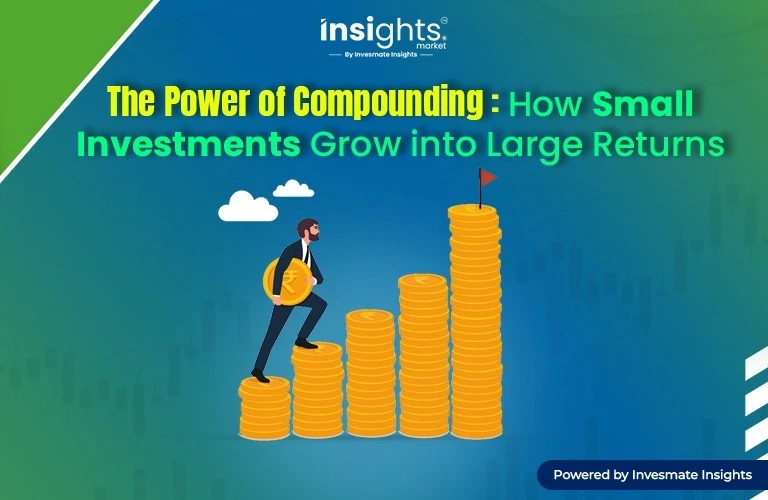![]()
Have you ever wondered how small savings can grow into a substantial corpus over time? Or why financial experts constantly emphasize the importance of starting investments early?
The key to these questions lies in a simple but powerful concept – The Power of Compounding.
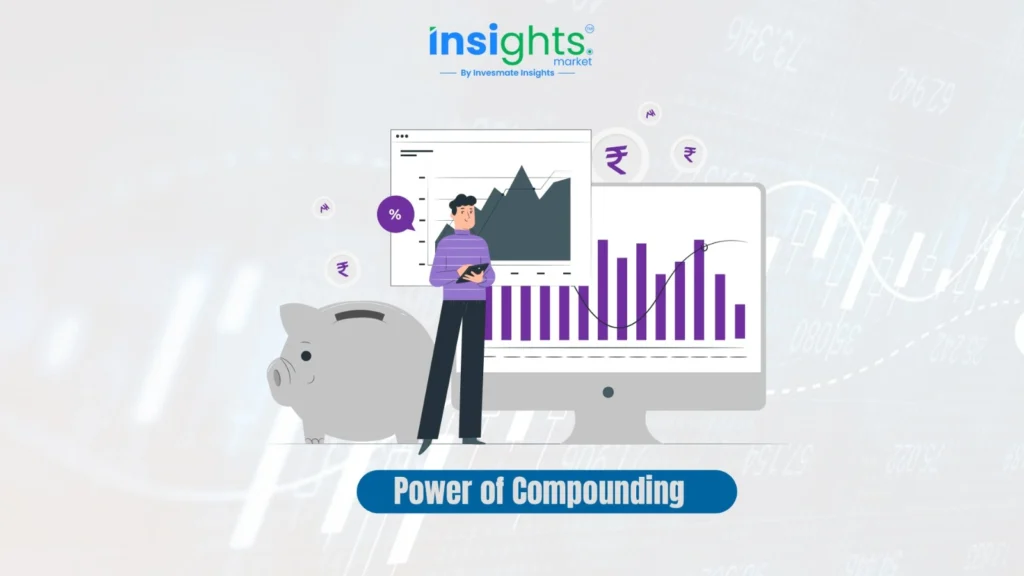
Albert Einstein famously called it the “Eighth Wonder of the World”. He said, “He who understands it, earns it. He who doesn’t, pays it.” Even legendary investor Warren Buffett built most of his wealth leveraging the magic of compounding.
In this blog, we’ll explore what compounding is, how it works, how it differs from simple interest, and how you can use it to build long-term wealth.
What is Compounding?
Compounding is a powerful financial process where you earn interest not only on your original principal but also on the interest accumulated in previous periods — also known as “interest-on-interest”.
Think of a small snowball rolling down a hill. As it rolls, it gathers more snow and gets bigger and bigger. Compounding works similarly — as time goes on, your savings grow faster.
Formula for Compound Interest
Compound interest can be calculated using the formula:

Where:
- A = Final amount (Total amount including interest)
- P = Principal amount (Initial investment)
- r = Annual interest rate (in decimal form, e.g., 10% = 0.10)
- n = Number of times interest is compounded per year (e.g., once = 1, half-yearly = 2, quarterly = 4)
- t = Time in years
Example:
Suppose you invest ₹10,000 for 3 years at an annual interest rate of 10%, compounded once a year (n = 1).
Then:
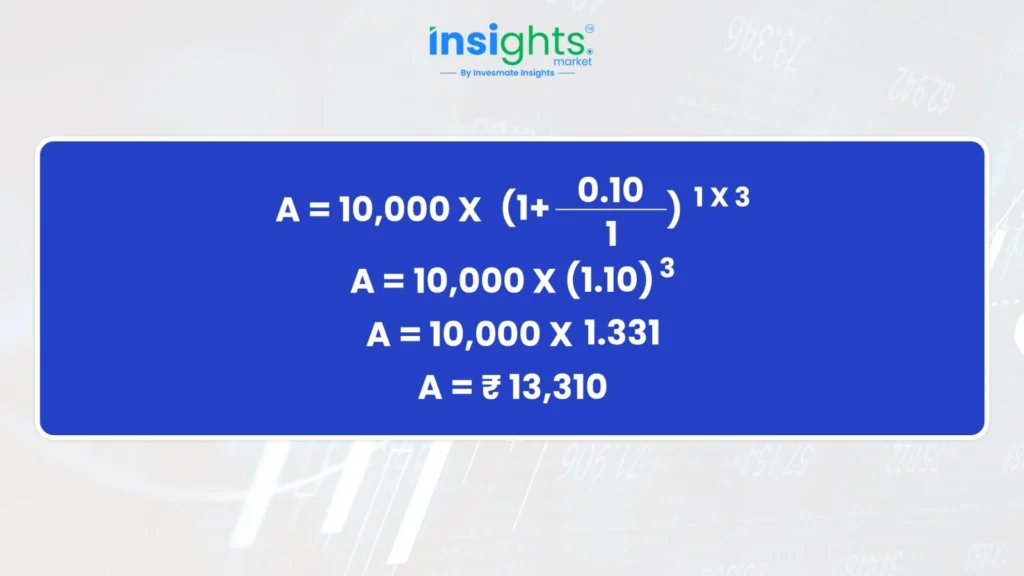
So, after 3 years, your investment grows to ₹13,310, and you earn ₹3,310 in interest.
Simple Interest vs Compound Interest
Let’s take a simple example to understand the difference between Simple Interest (SI) and Compound Interest (CI):
Assume you invest ₹10,000 for 5 years at an annual interest rate of 10%.
Simple Interest
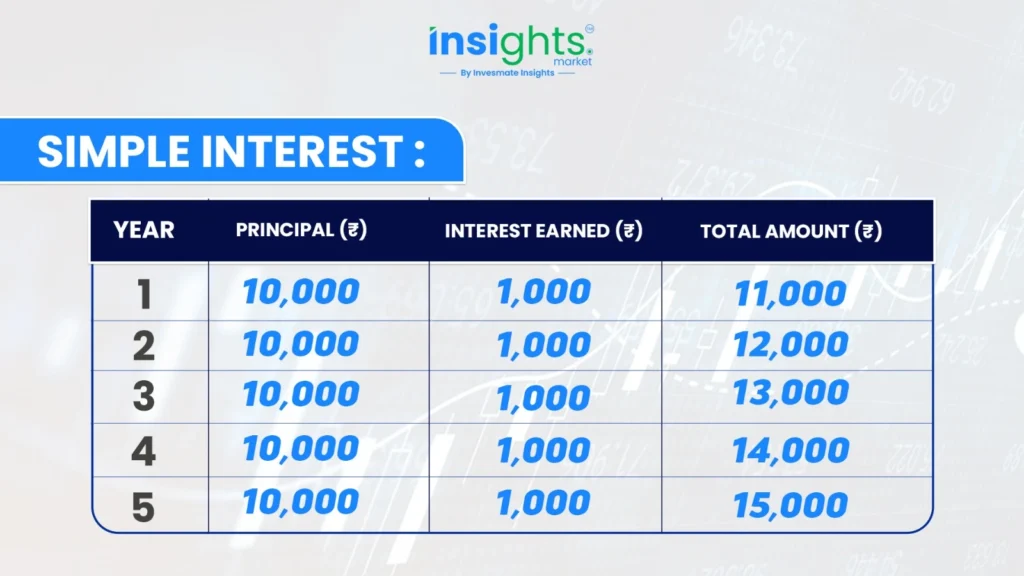
You earn ₹5,000 in total interest. The amount remains the same every year as it is calculated only on the principal.
Compound Interest
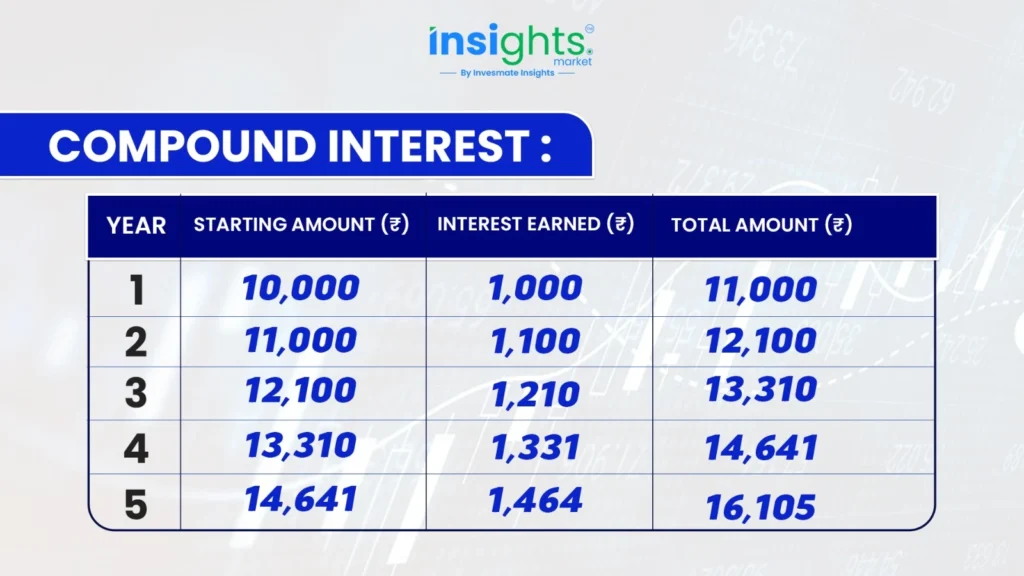
In this case, you received a total interest of ₹6,105. This is because each year, interest was calculated not only on the principal amount but also on the interest from the previous years—causing the total profit to increase gradually.
Therefore, with the same principal and the same interest rate over 5 years, the final amount under compound interest comes to ₹16,105, whereas under simple interest you would get ₹15,000. In other words, due to compounding—earning interest on the previous year’s interest—you made an additional profit of ₹1,105.
With Invesmate Insights’ Compound Interest Calculator, calculating compound interest is now easier than ever. Want to know how much your investment will grow over the years? Check it right now using this link:
https://insights.market/research/compound-interest-calculator
How Compounding Helps Grow Your Wealth
If used properly, compounding can multiply your savings significantly. Here’s how:
1. Time is the Key
The longer you stay invested, the greater your returns — because compounding needs time to build momentum.
2. Small Savings, Big Returns
Even small monthly investments can turn into large sums over time if done consistently.
3. Reinvesting Interest
Reinvesting your earned interest or dividends increases your capital and boosts future earnings, accelerating the compounding effect.
A Real-Life Example: SIP Investment
Let’s say you invest a fixed amount every month via SIP (Systematic Investment Plan) in a mutual fund and earn an average annual return of 12%. Over the long term, this can lead to substantial growth.
Estimated Returns from Monthly SIP:
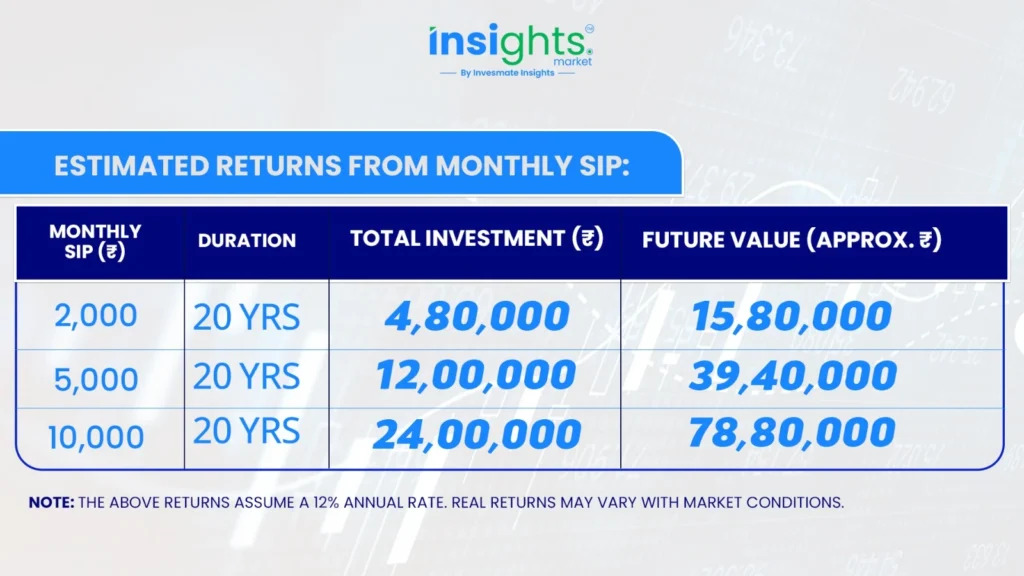
With Invesmate Insights’ STEP SIP Calculator, SIP calculation has become even simpler. So, to determine your monthly SIP amount, check it right now using this link:
https://insights.market/research/compound-interest-calculator
5 Strategies to Maximize Compounding
- Start Early
Even small amounts grow significantly with time. Start as soon as possible. - Invest Regularly
Be consistent — whether it’s SIPs, FDs, RDs, or PPF. Discipline matters. - Avoid Withdrawals
Let your investment grow uninterrupted. Keep an emergency fund separately. - Increase Investments Over Time
Raise your investment amount yearly in line with your income. It accelerates returns. - Stay Long-Term
Don’t get swayed by short-term gains or market volatility. Compounding rewards patience.
Where Does Compounding Work Best?
Compounding works effectively in the following investment instruments:
- Fixed Deposits (Cumulative) – Reinvested interest increases the capital.
- Recurring Deposits (RD) – Monthly savings accumulate with interest.
- Mutual Fund SIPs – Long-term SIPs help with wealth building.
- PPF (Public Provident Fund) – Government-backed scheme with tax-free compounding.
- EPF (Employee Provident Fund) – Regular contributions earn compound interest.
- Stocks – Long-term holdings benefit from dividends and price appreciation.
Mistakes to Avoid While Compounding
- Starting too late
- Discontinuing midway
- Frequent withdrawals
- Chasing short-term profits
- Ignoring inflation-adjusted returns
Conclusion
The power of compounding is a key to long-term financial success. With time, consistent savings, and patience, even small investments can grow into a large corpus. It’s not just about numbers — it’s a mindset and financial discipline that helps build a secure future.
However, to reap its full benefits, avoid common mistakes such as starting late or interrupting your investments. With a planned and long-term approach, you’ll witness the real impact of compounding and move closer to your financial goals.
FAQs
Monthly investments in mutual funds earn returns that are reinvested, leading to compounding growth over time.
Both are effective. SIP offers discipline and averages returns over market ups and downs.
Yes. Long-term compounded returns generally outperform inflation.
Use online calculators or check mutual fund statements.
Regular long-term investments can create a large retirement corpus through compounding.
Absolutely. Increasing your SIP (step-up) accelerates the compound growth of your investment.


